Abstract
Risk factors for mental retardation were studied prospectively in 12 000 children born in northern Finland in 1966 and followed to the age of 14 years. The number of untraced children was less than 2 per 1000. Altogether 326 children had an IQ less than 86, and the incidence of severe retardation (IQ less than 50) was especially high. An incidence figure for children with mental retardation, a separate figure for healthy children, and also the death rate were calculated for each disease. Only in the cases of Down's syndrome and some hereditary diseases were all the exposed children mentally retarded; in other diseases some children did not seem to suffer any sequelae. A risk factor could be found for 50.6% of the total number of children with mental retardation, the percentage decreasing from the severest to the mildest form (86.7%, 45.4%, and 30.9%). Some 9.4% of the healthy children and 77.7% of those who died had had one or more of these conditions. Prenatal conditions were most often associated with severe mental retardation (64%), and perinatal conditions with mild retardation, (IQ 50 to 70; 27%) and mental subnormality (IQ 71 to 85; 18%). Cases with no known risk factor were more common among boys than girls.
Full text
PDF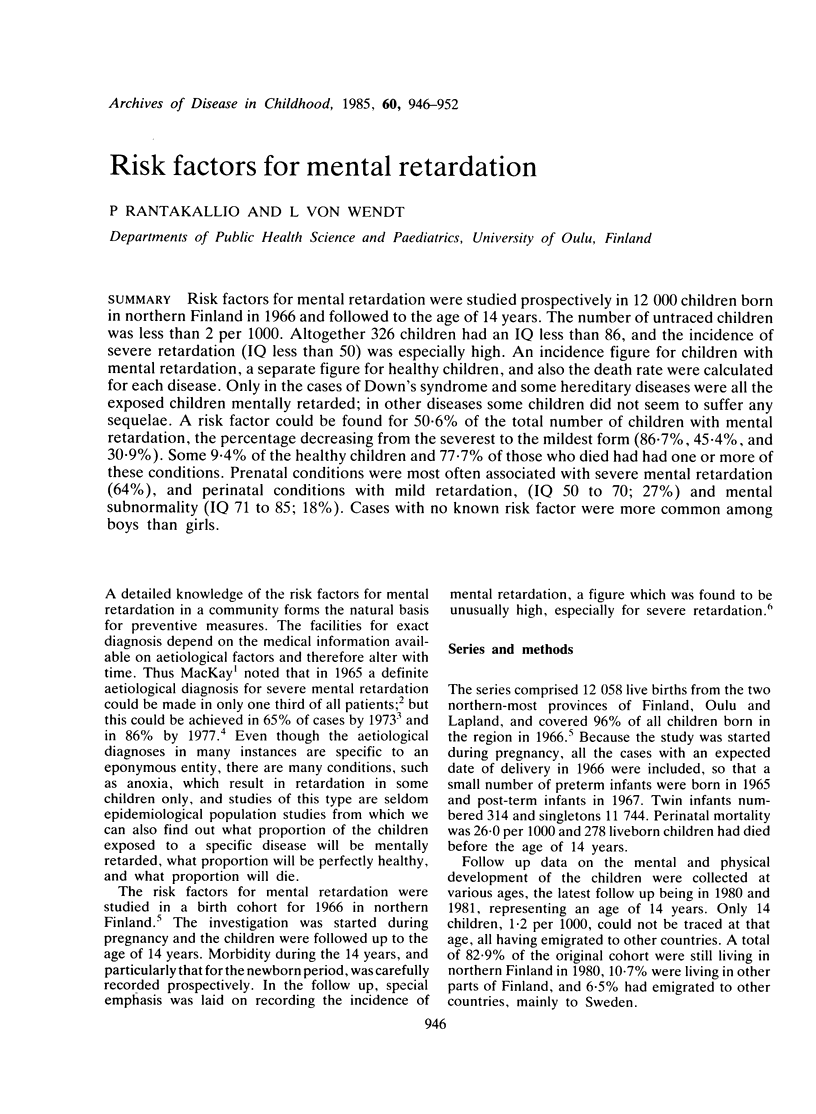
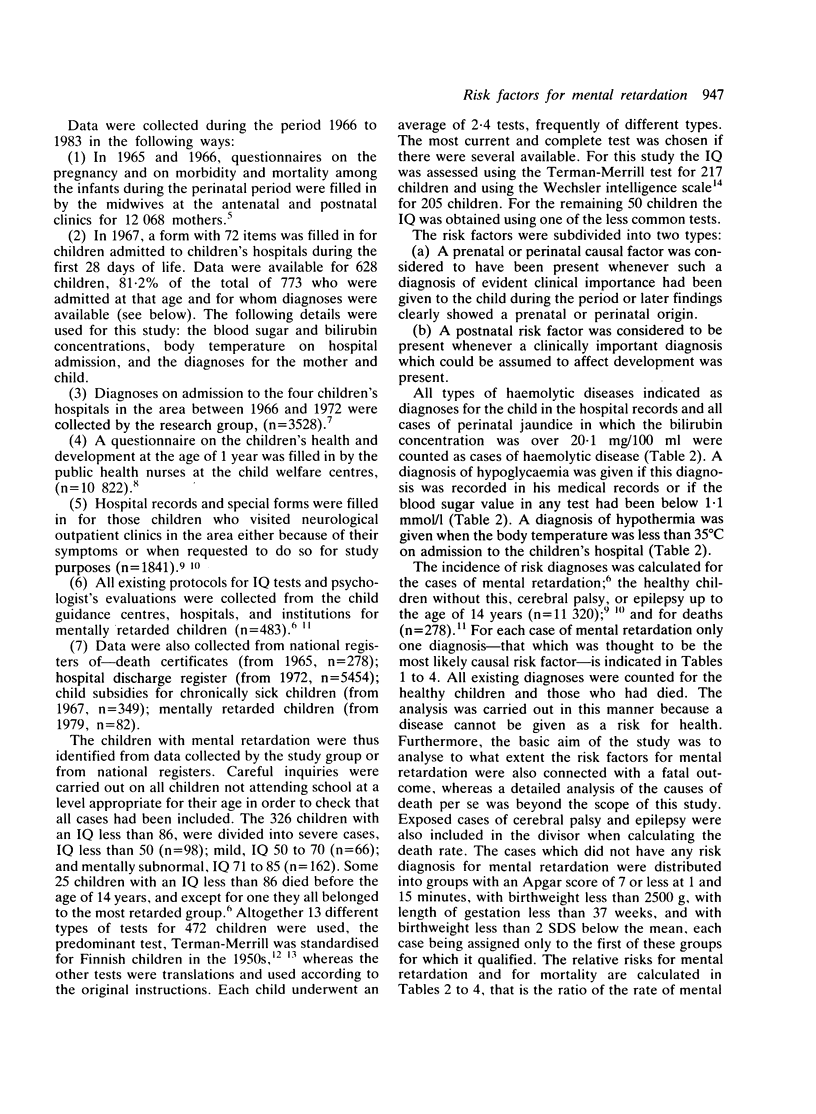
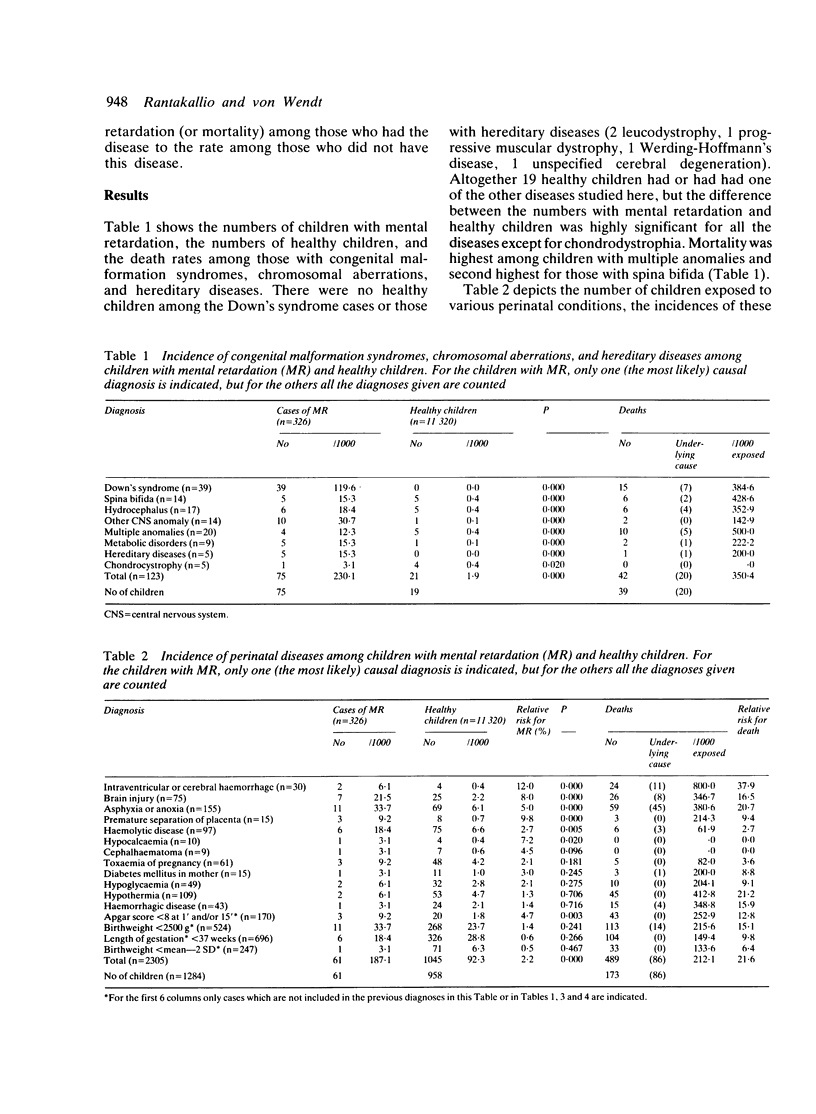
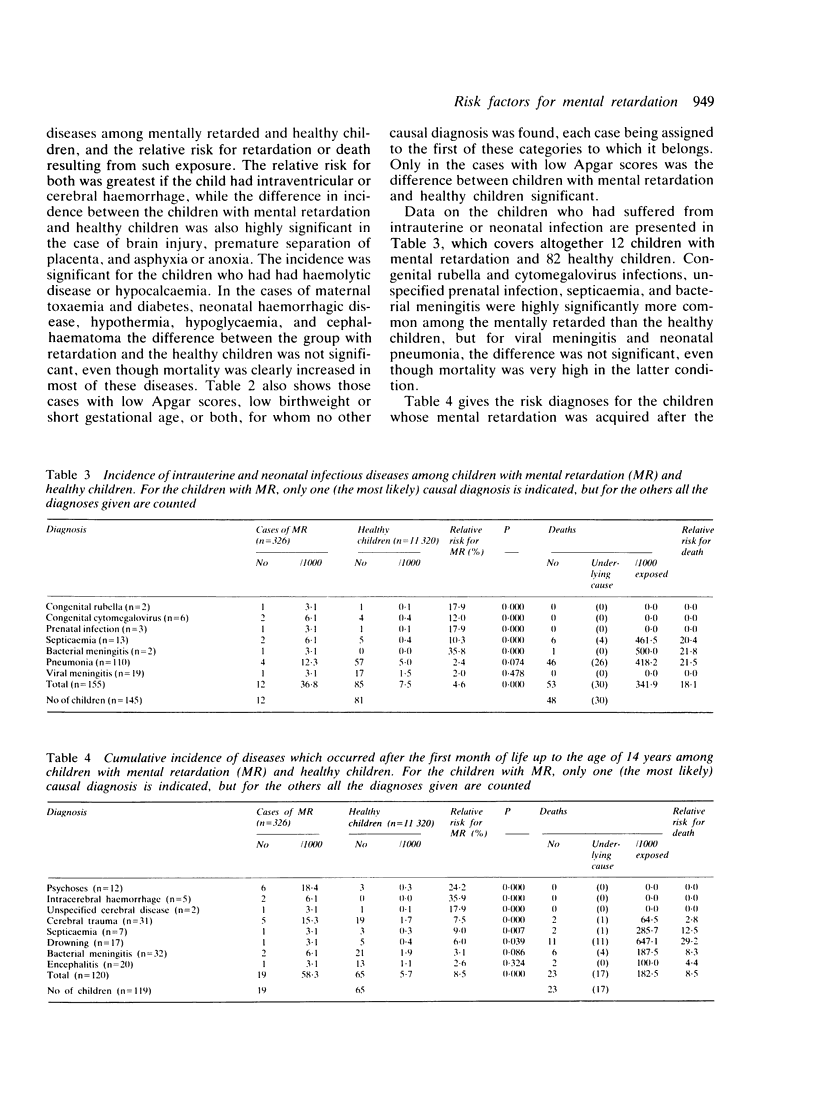
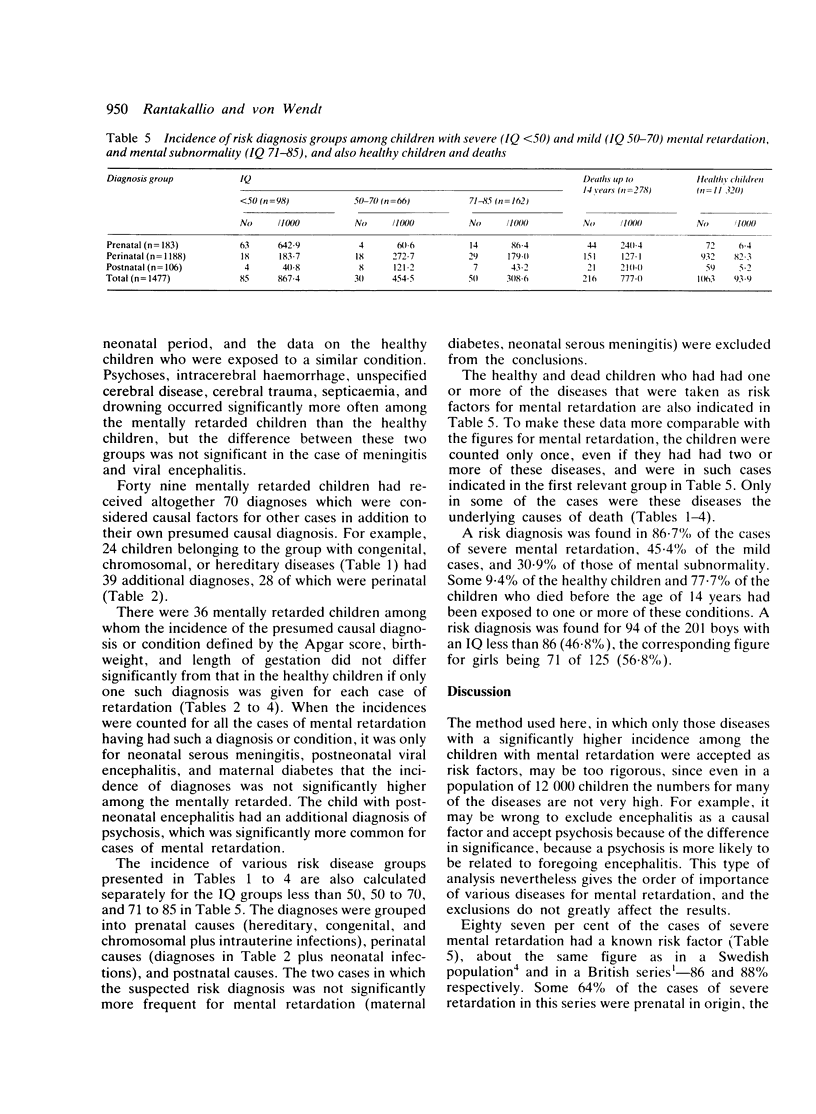
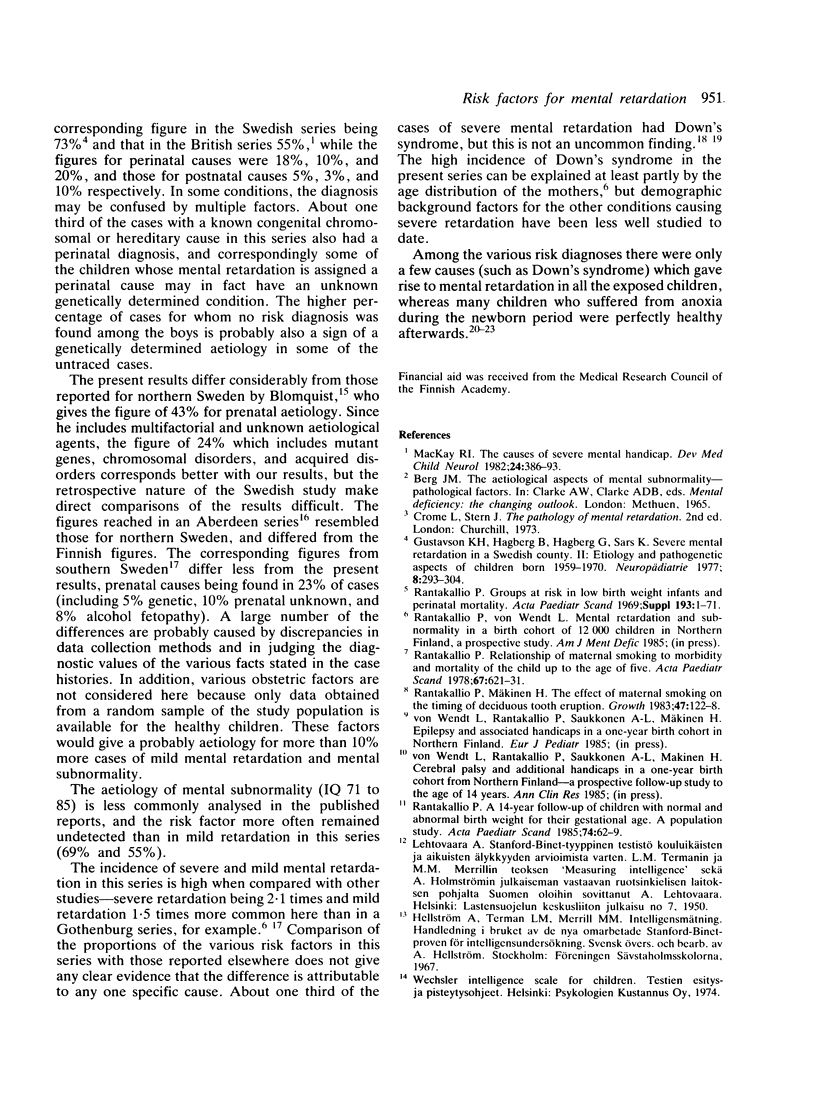
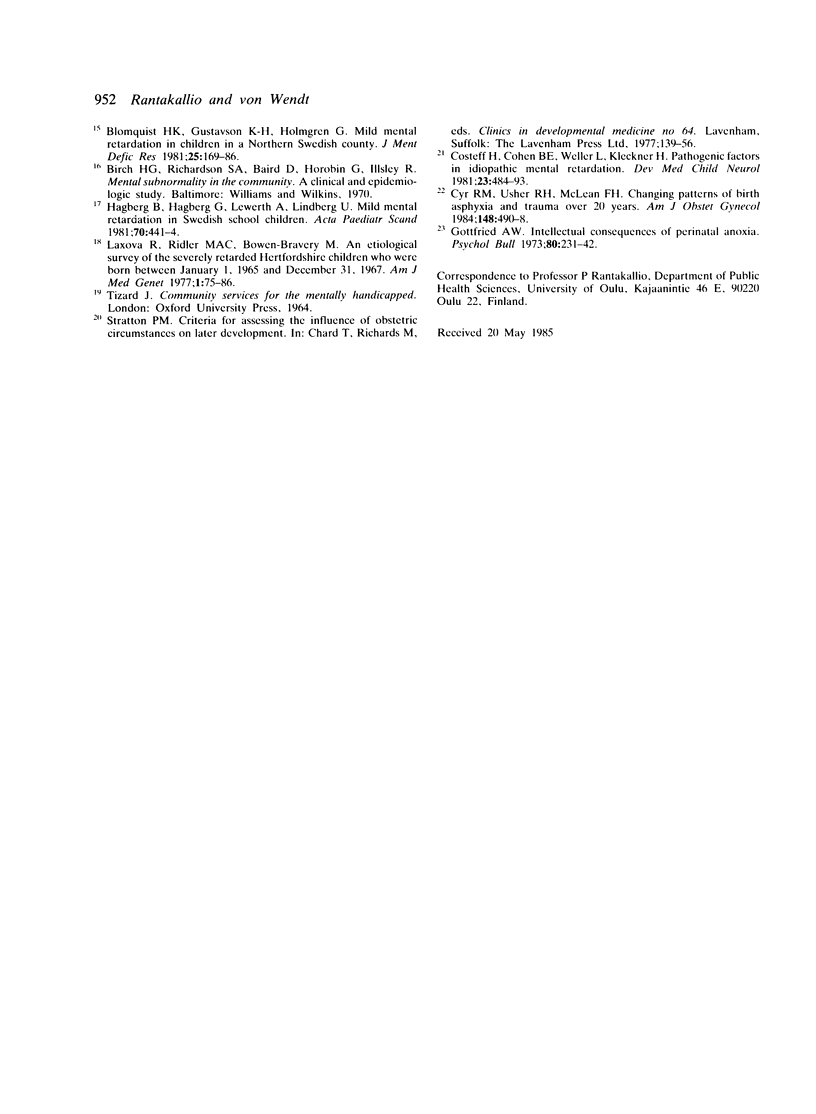
Selected References
These references are in PubMed. This may not be the complete list of references from this article.
- Blomquist H. K., Gustavson K. H., Holmgren G. Mild mental retardation in children in a northern Swedish county. J Ment Defic Res. 1981 Sep;25(Pt 3):169–186. doi: 10.1111/j.1365-2788.1981.tb00107.x. [DOI] [PubMed] [Google Scholar]
- Costeff H., Cohen B. E., Weller L., Kleckner H. Pathogenic factors in idiopathic mental retardation. Dev Med Child Neurol. 1981 Aug;23(4):484–493. doi: 10.1111/j.1469-8749.1981.tb02022.x. [DOI] [PubMed] [Google Scholar]
- Gottfried A. W. Intellectual consequences of perinatal anoxia. Psychol Bull. 1973 Sep;80(3):231–242. doi: 10.1037/h0034914. [DOI] [PubMed] [Google Scholar]
- Gustavson K. H., Hagberg B., Hagberg G., Sars K. Severe mental retardation in a Swedish county. II. Etiologic and pathogenetic aspects of children born 1959--1970. Neuropadiatrie. 1977 Aug;8(3):293–304. doi: 10.1055/s-0028-1091525. [DOI] [PubMed] [Google Scholar]
- Hagberg B., Hagberg G., Lewerth A., Lindberg U. Mild mental retardation in Swedish school children. I. Prevalence. Acta Paediatr Scand. 1981 Jul;70(4):441–444. doi: 10.1111/j.1651-2227.1981.tb05720.x. [DOI] [PubMed] [Google Scholar]
- Laxova R., Ridler M. A., Bowen-Bravery M. An etiological survey of the severely retarded Hertfordshire children who were born between January 1, 1965 and December 31, 1967. Am J Med Genet. 1977;1(1):75–86. doi: 10.1002/ajmg.1320010109. [DOI] [PubMed] [Google Scholar]
- Mackay R. I. The causes of severe mental handicap. Dev Med Child Neurol. 1982 Jun;24(3):386–388. doi: 10.1111/j.1469-8749.1982.tb13632.x. [DOI] [PubMed] [Google Scholar]
- Rantakallio P. A 14-year follow-up of children with normal and abnormal birth weight for their gestational age. A population study. Acta Paediatr Scand. 1985 Jan;74(1):62–69. doi: 10.1111/j.1651-2227.1985.tb10922.x. [DOI] [PubMed] [Google Scholar]
- Rantakallio P. Groups at risk in low birth weight infants and perinatal mortality. Acta Paediatr Scand. 1969;193(Suppl):1+–1+. [PubMed] [Google Scholar]
- Rantakallio P., Mäkinen H. The effect of maternal smoking on the timing of deciduous tooth eruption. Growth. 1983 Summer;47(2):122–128. [PubMed] [Google Scholar]
- Rantakallio P. Relationship of maternal smoking to morbidity and mortality of the child up to the age of five. Acta Paediatr Scand. 1978 Sep;67(5):621–631. doi: 10.1111/j.1651-2227.1978.tb17813.x. [DOI] [PubMed] [Google Scholar]


